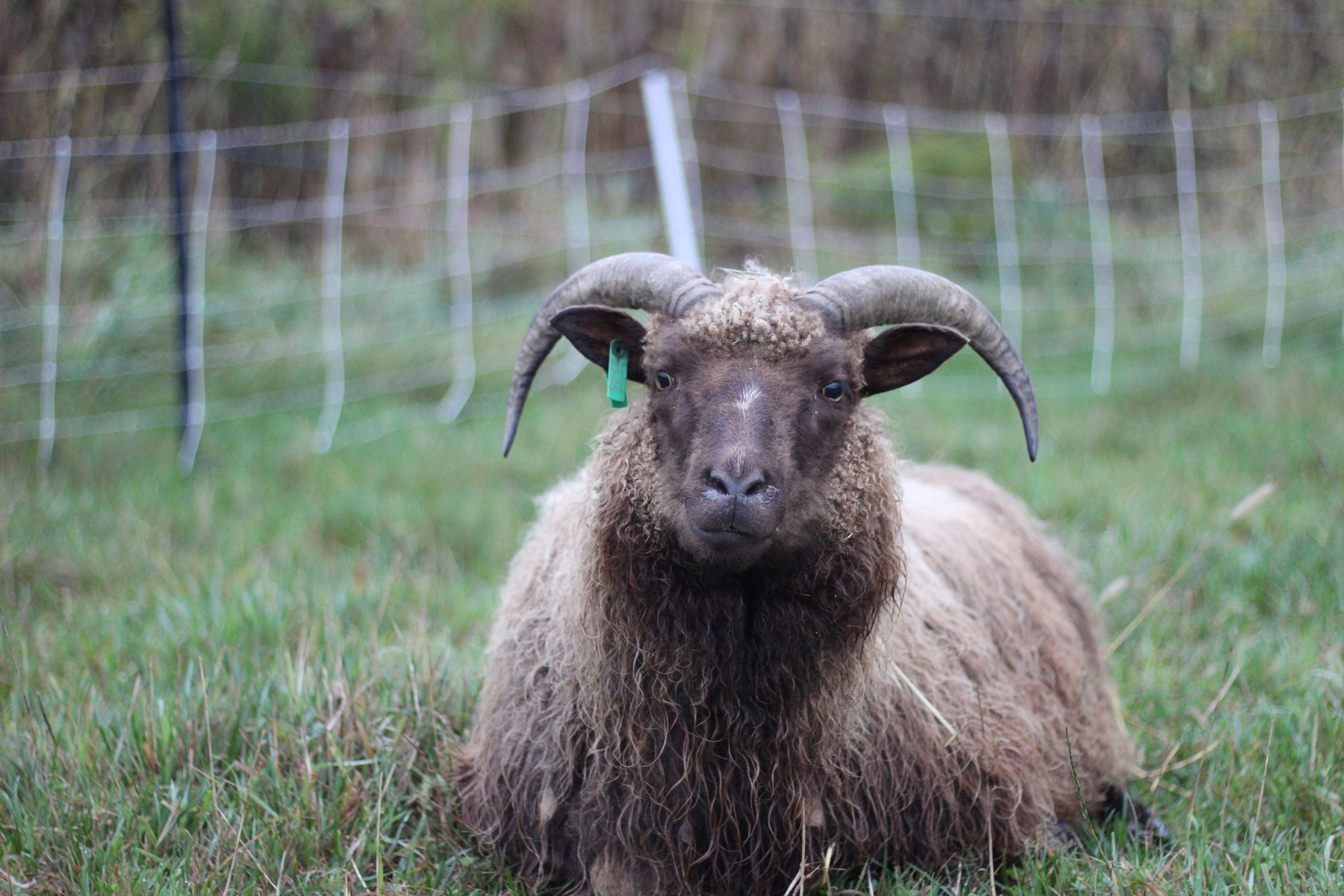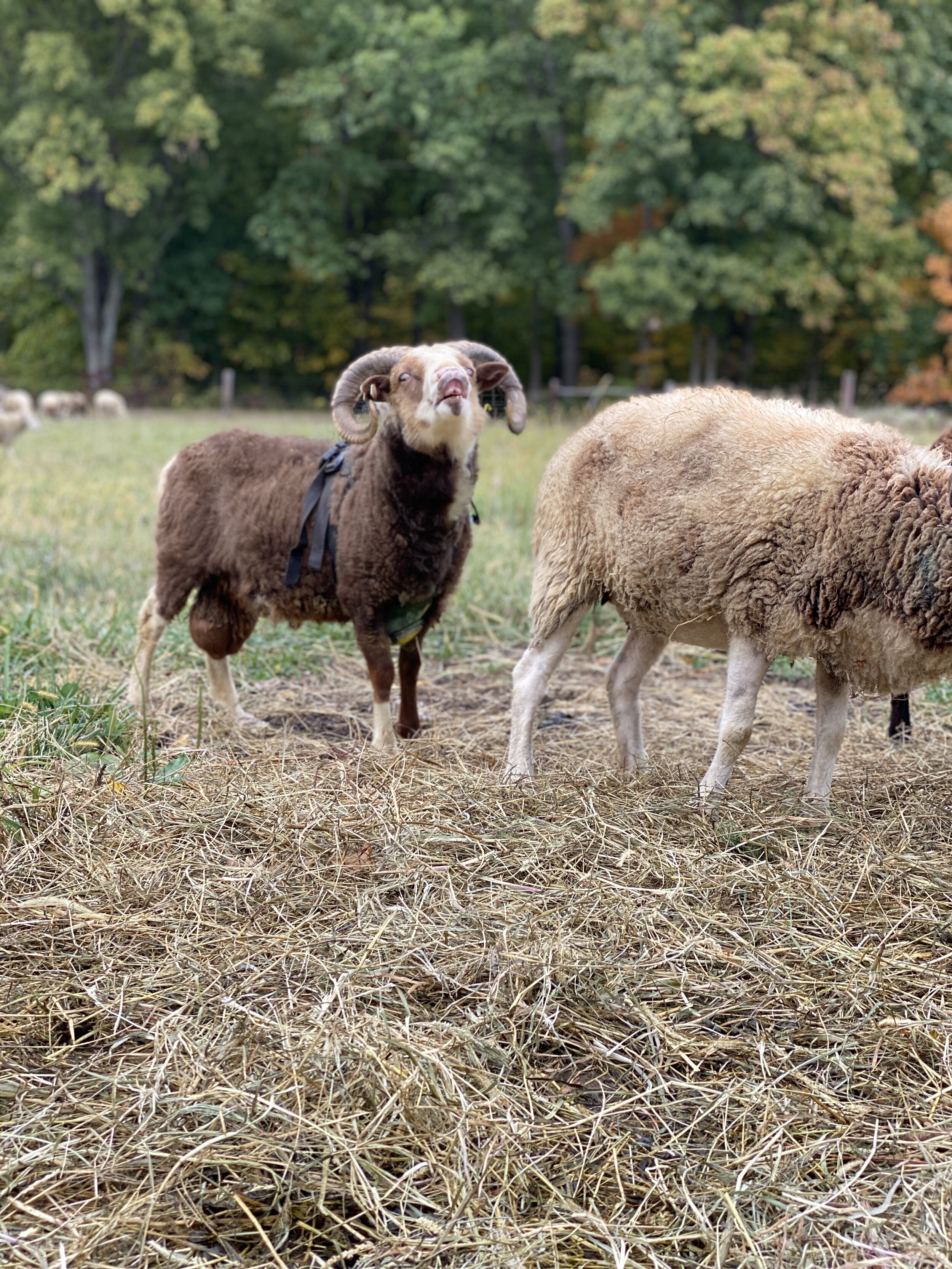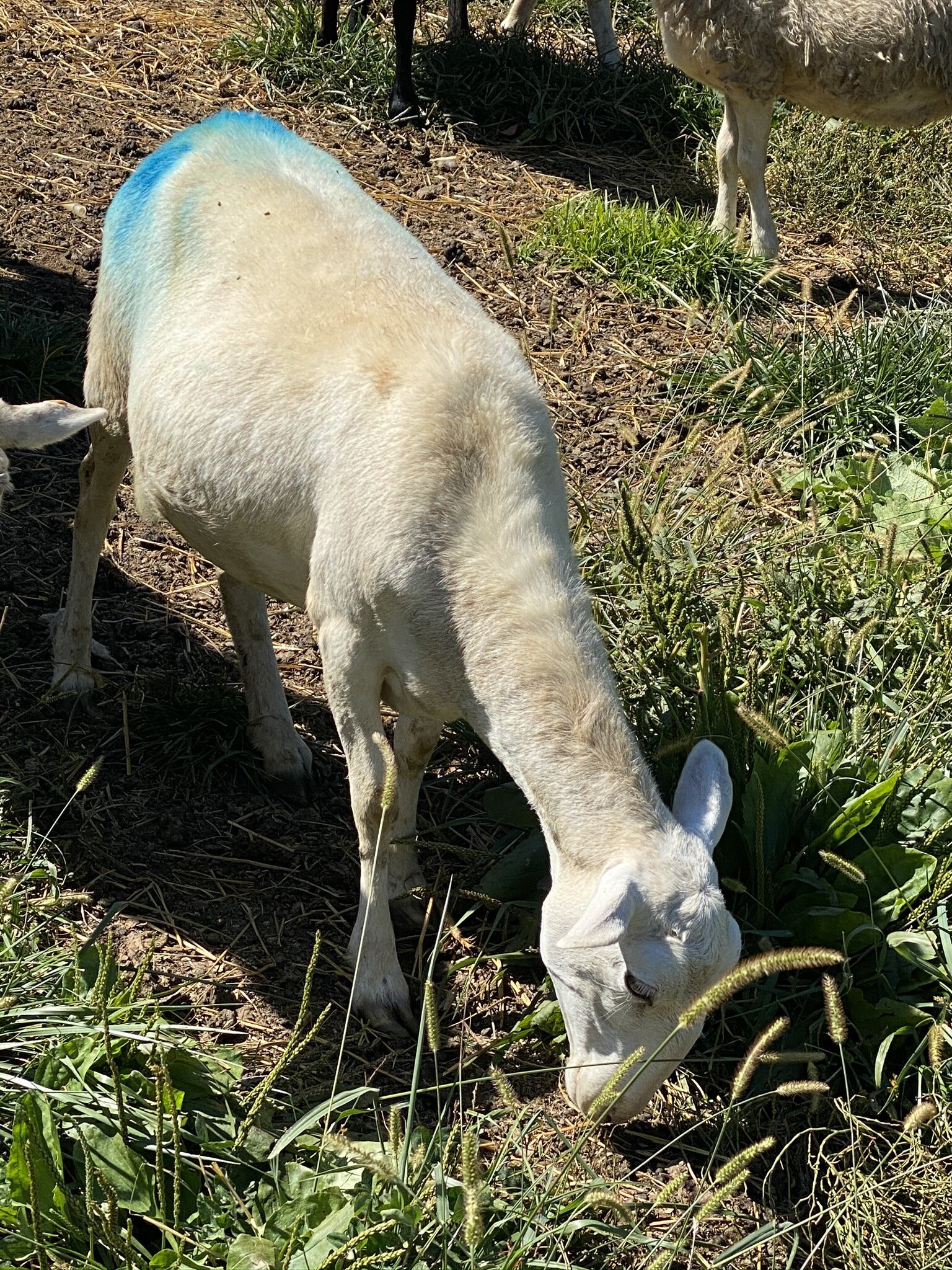
Preparing the Flock For Breeding Season
Now, you might be asking yourself, what exactly do you mean “prepare” for breeding season? Don’t you just put the boys with the girls and let them do their thing? Well, sort of! Every farmer is going to be different when it comes to the time of year they wish to breed their ewes. First, let’s talk about sheep pregnancy.
Heat Cycles and Pregnancy
Fun fact. Sheep aren’t like humans! (or pigs, or cows) and they can’t get pregnant every month. Now, I cannot speak for every sheep breed because there are a LOT of different sheep breeds. However, most sheep breeds begin to go into heat as the days get shorter. This shortage in daylight triggers their cycles. There are some breeds, like my icelandic’s, that will not begin to cycle until October. Our katahdin and jacob ewes cycle much earlier (say beginning of September) and we often have lambs in January and early February. Once a ewe begins her cycle, if not bred, she will cycle again in 17 days.
There ARE a few sheep breeds that actually can cycle throughout certain times of the year and give birth to lambs in Autumn. Dorsets, Finns and even Katahdins can do that! So, if you are interested in having lambs in the fall then maybe one of those breeds may be for you.
Sheep are pregnant for just shy of five months, around 147 days. Give or take. So, if you put the ewe in with the ram in mid September, you can expect lambs in February.
Getting the Ewes Ready For Conception aka Flushing
After ours ewes have nursed their lambs all spring and summer, they (depending on the pasture conditions) may need a little help getting their body ready for conception. This is also known as “flushing” the ewes. Flushing the ewes prior to breeding helps them put weight back on if they are a tad bit thinner than they should be. When they are in great physical health, and aren’t thin, this increases the ovulation which in turn increases your chances at getting twins.
If you see that your ewes are in a body condition score of 2 or less, than flushing them could help them gain weight and increase their conception rates. Ideally, we want our ewes to be at least a 3. “It should be noted that it takes three weeks on an increased level of nutrition to increase a BCS by one half-score.” https://www.canr.msu.edu/news/flushing-small-ruminants-for-a-higher-ovulation-rate
Flushing could mean feeding high quality hay, moving to a fresh new pasture, or feeding oats or corn or a premade sheep ration from your local feed store. For our flock of sheep, we feed corn, at 1/4-1/2 lb per head per day. When looking up feed rations, most are for sheep that are 150 lbs or more, only a few of our older ewes are at the 125 mark, with the rest being 100 lbs or less. Keep this in mind if you are trying to figure out how much to feed your ewes during flushing.
Why do we feed corn? It is readily available in our area, and high quality hay is not always on hand especially if we are below average rainfall, like we are now. Additionally, the kernel of the corn contains essential vitamins and minerals such as Vitamin E. Vitamin E is important for the growing lambs because if the ewes do not consumer adequate quantities of vitamin E and selenium during their pregnancy, then the lambs can get “white muscle disease”. (symptoms usually occur immediately after birth and they struggle to stand, and are often weak). Thus, corn has two purposes. Put weight on the ewes and as we continue to feed the ewes corn, their growing offspring will benefit from it.
We will start feeding a bit of corn to the ewes 3 weeks before I anticipate breeding season start. Which usually means by mid August, I am adding a bit of corn to their diet on the pasture. Sheep do not tolerate abrupt feed changes. It can upset their rumen digestive tract, so we start slowly with just a few handfuls a day and slowly increase to that 1/4 lbs of corn a day (and more if necessary).
What About the Rams and What is a Marking Harness?
Before breeding time, it is also important for me to check on the rams. I will check to make sure their hooves are in good shape and that there are not signs of illness or hoof problems. After they’ve passed their health check, it is time for their most worn accessory, the marking harness! Each ram gets their own color and wears this harness. The harness has a place holder for a wax crayon. When the ram mounts the ewe, it leaves a mark on her. I then count out 147 days and that is her anticipated due date. Now, what if she is marked but she didn’t actually conceive? Good question! Ideally, you should change out the marking harness crayons every 17 days and then you can see if the ewe came back into heat and adjust her due date.
Filbert (aka Fil, our Icelandic ram is wearing his harness and it has a yellow crayon. That face he is making is normal during breeding time and is called Flehmen behavior)
Peter, our other Icelandic ram is wearing his blue harness, and is also doing his Flehmen face.
Pollyanna has been marked! (September 2020)
What happens next?
During breeding season (September-December) the ewes and rams will breed and I will take notes and dream about baby lambs until then!
Polly was marked FIRST this year and her anticipated due date is January 25th. It is always exciting!
We have 28 adult ewes and we also have a group of ewe lambs that we will breed once we purchase another ram. Of the ewe lambs that we have, I plan to breed 12 of them. Those ewes will likely cycle later since they are 75% or 100% Icelandic genetics, and I will expect their lambs in April and maybe even May.
All in all, breeding season is a time to get excited about upcoming lambing season. Nothing brings me more joy than seeing big, healthy, pregnant mamas munching on hay during the winter when the snow falls. It is wonderful.
I hope you are all well and staying safe.
Talk to you soon!
Bethany
Autumn surprises
We have had unseasonably warm weather in Ohio the past few weeks, where the temperatures held steady in the high 70's low 80's. But, today the rain finally came and with it, so did the cooler temperatures.
I came out to the barn today to find a mama and her sweet baby ewe lamb dozing off and in the barn away from the drizzling rain. I knew she was due soon, but with the Ram running with the ewes since March, we were unsure of how the breeding season would go. It was a pleasant surprise to find her sweet face when I rounded the barn door corner. Typically, the ewes aren't exposed to the ram until the late summer/early fall when the ewes will go into cycle (heat) and then five months later, the lambs will be born (typically January). But, we are trying things a little differently, and I wanted to see how the ewes would cycle and left Barry (the ram) with them all spring and summer. Not all sheep breeds will cycle out of season (meaning other than late summer/fall) but some can and will. Katahdins, Jacob's and Icelandics can cycle in times, and so I let nature take its course so we could observe and see which ewes would cycle and give us fall lambs, and those that will give us winter lambs.
It is days like today that I enjoy farming so much. There is something magical about the ebb and flow of farm life that force us to slow down. To observe. To simply be. The weather dictates my schedule, and I like that. I like that my life is so intertwined with it that it allows me time to pause, reflect, and "see" what is happening around me. I watched the mama ewe with her lamb, and she watched me, unsure if I posed a threat or if I was harmless. She stomped her feet when I got too close, warning me that I was closing in on her personal space and she wasn't having it. After moving them into their own "nursery suite" I left them alone and watched from a distance. Not everyday is simple and sweet like this, but I am thankful for days that are.




